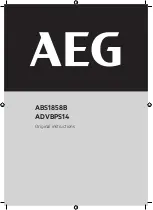
14
Operation
Preparations
Remove the spray gun and the accessories from the packing and check all
parts for damage in transit.
Dispose of packaging material or store them out of each of children.
Do not use textured wall paint as it can block the nozzle.
Thin the paint to the suitable viscosity before you operate the spray gun.
Always ensure that the surfaces to be sprayed are free from dust, dirt and
grease.
Make sure you have masked the areas that should not be sprayed using a
good quality masking tape.
The paint or fluid to be sprayed should be thoroughly mixed and free from
lumps or other particles.
Many substances can be sprayed with the spray gun, but always check the
manufacturer’s recommendations before purchasing paint.
Always remember to disconnect the power plug of the spray gun before filling
the paint container with sprayable material.
Thinning
Most paints are supplied ready for brush application and will need to be thinned
before they are suitable to be sprayed.
Follow the manufacturer’s advice on thinning the paint when used with a spray
gun. The viscosity cup will help you to determine the correct viscosity of the paint
to be used. To determine the correct viscosity fill the cup to the brim with paint.
Measure the time (in seconds) it takes for the cup to empty back in the can.
The table below shows the recommended time for the different types of mate-
rial/paint:
Plastic & Latex Paint: 24 – 28 seconds
Water based Paint: 20 – 25 seconds
Primers: 24 – 28 seconds
Varnishes: 20 – 25 seconds
Oil based Paint: 18 – 22 seconds
Enamel Paint: 18 – 22 seconds
Aluminium Paint: 22 – 25 seconds
Car Underbody Sealants: 25 – 35 seconds
Wood Sealers: 28 – 35 seconds









































